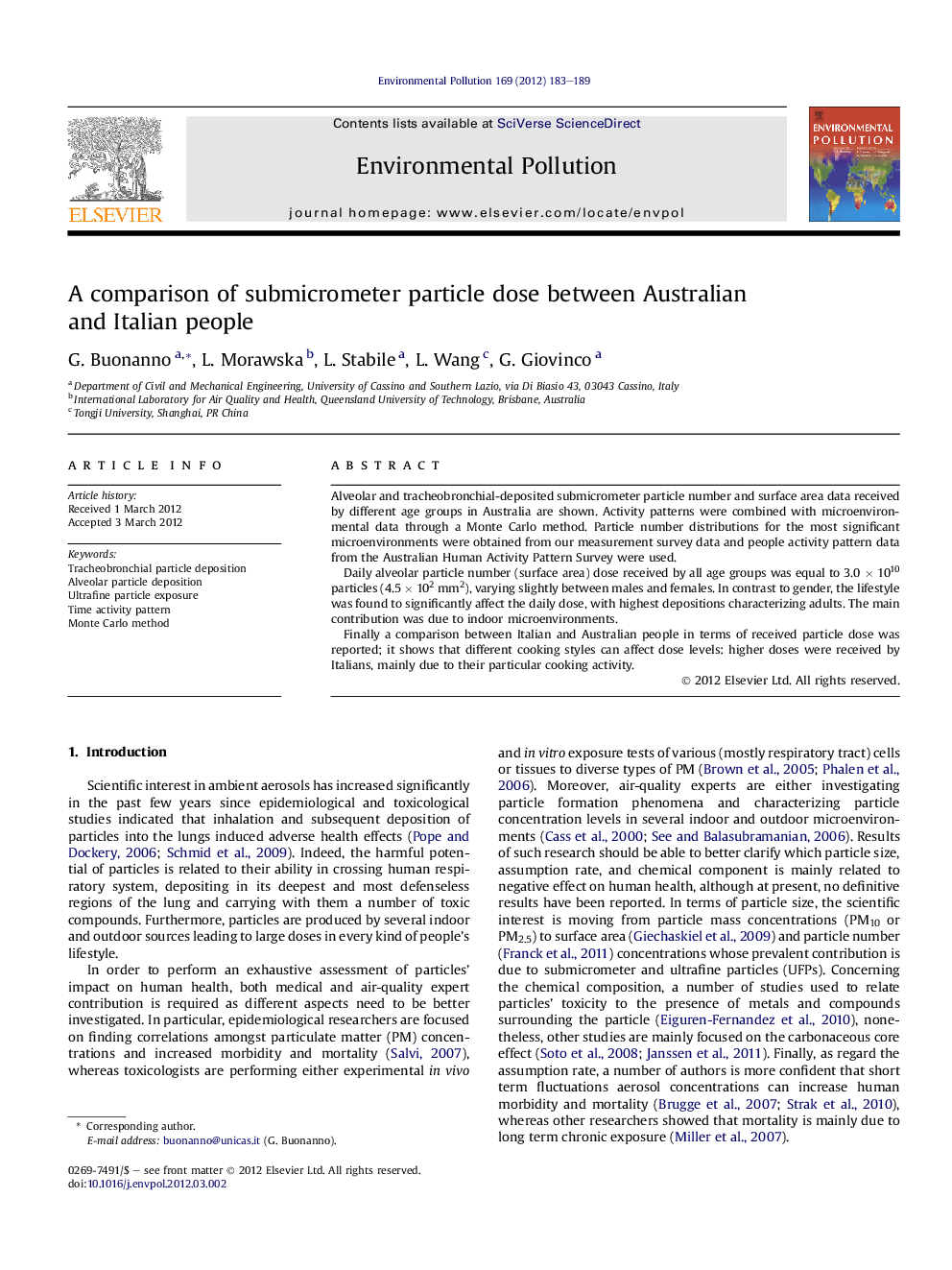| کد مقاله | کد نشریه | سال انتشار | مقاله انگلیسی | نسخه تمام متن |
|---|---|---|---|---|
| 4424815 | 1619203 | 2012 | 7 صفحه PDF | دانلود رایگان |

Alveolar and tracheobronchial-deposited submicrometer particle number and surface area data received by different age groups in Australia are shown. Activity patterns were combined with microenvironmental data through a Monte Carlo method. Particle number distributions for the most significant microenvironments were obtained from our measurement survey data and people activity pattern data from the Australian Human Activity Pattern Survey were used.Daily alveolar particle number (surface area) dose received by all age groups was equal to 3.0 × 1010 particles (4.5 × 102 mm2), varying slightly between males and females. In contrast to gender, the lifestyle was found to significantly affect the daily dose, with highest depositions characterizing adults. The main contribution was due to indoor microenvironments.Finally a comparison between Italian and Australian people in terms of received particle dose was reported; it shows that different cooking styles can affect dose levels: higher doses were received by Italians, mainly due to their particular cooking activity.
► Particle number and surface area deposition in alveolar and tracheobronchial areas.
► Activity pattern and microenvironment data combination by Monte Carlo simulation.
► Deposition increases as a function of age group: maximum value for 19–40 years old.
► Major contributions arise from cooking, eating and transportation activities.
► Italian people statistically experience a dose higher than Australian one.
Journal: Environmental Pollution - Volume 169, October 2012, Pages 183–189